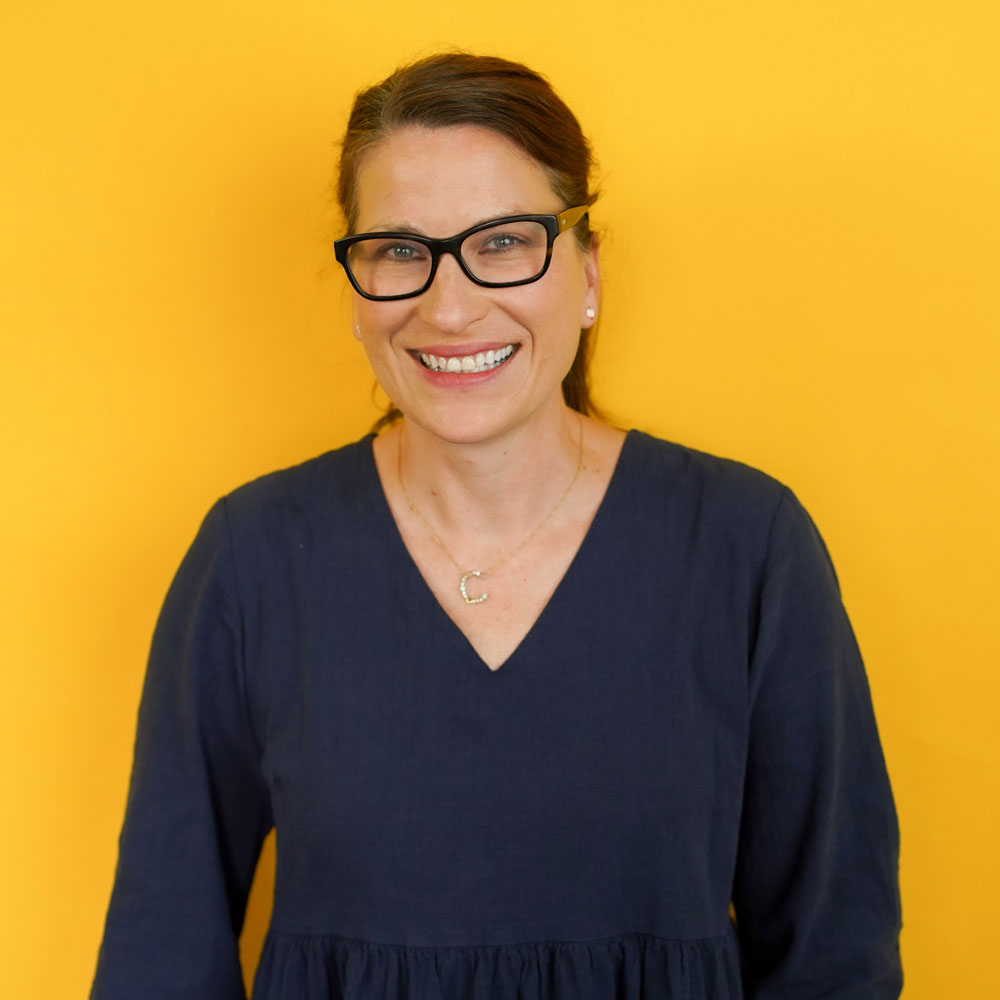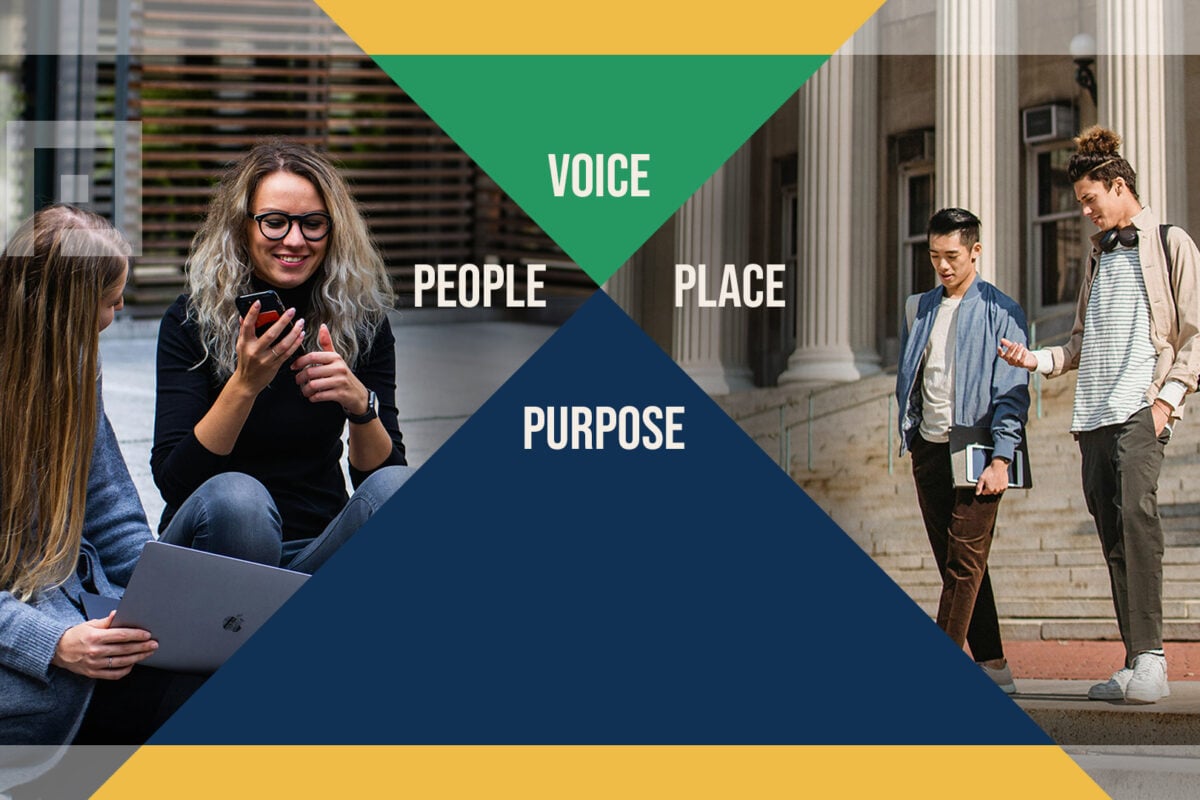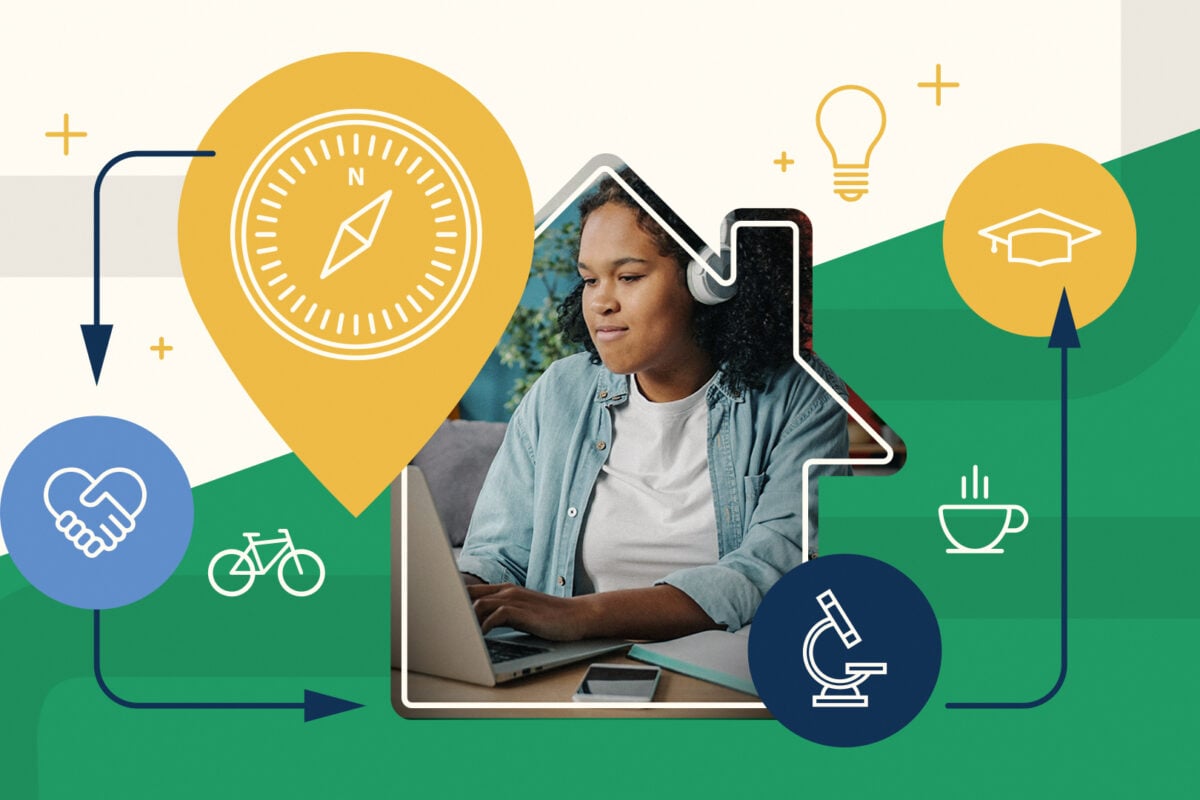Did higher ed websites change for the better since COVID? From accessibility, virtual tours, asynchronous learning, to internal communication needs, to web design trends that make search easier on users and ease cognitive load.
Show Notes
Two leaders in higher education website design riff on the state of .edus especially in regards to how COVID influenced greater demand for customization and improved user experience.
- Changes since COVID
- Cognitive load
- Best practices
- Data-driven strategies
- Tips on how to innovate
Learn More About Paskill's Website Solutions
Transcript
Cathy Donovan [00:00:00]
Hello and welcome to the Innovating Enrollment Success Podcast. Innovating Enrollment Success. Yes, it does sound ambitious and it sure is. This podcast turns the mic on for those making that happen in higher ed today.
I’m Cathy Donovan, Agency Marketing Director at Paskill. A higher education enrollment marketing firm that innovates in big and small ways every day for our college and university partners.
Today I’m joined by two leaders in website and digital content creation in the higher ed space. We’re going to unpack in about a half hour some best practices, making sure the needs and concerns of today’s prospective students and families are heard and factored into how we build better sites.
VP of interactive Ryan Pudloski and his team have built dozens of higher ed websites for institutions, representing the public, private, faith-based, and community college sectors, providing all kinds of enrollment solutions for all kinds of budgets.
Senior Digital Art Director, Zac McGroarty, is a former creative director at top-tier institution, Temple University. And he brings that elevated design energy to Paskill partners. Welcome Ryan and Zac.
Ryan Pudloski: Thanks. Good to be here.
Zac McGroarty: Thanks.
Cathy Donovan: Let’s get started.
So research continues to show that institutional websites are the number one way prospective students learn more about their college or university. While it might seem that that’s been the case for the past 10 years, we know college websites have changed since then, especially after COVID.
Ryan, can you tell me how you’ve seen college websites change since COVID?
Ryan Pudloski: Yeah. And the most obvious one might be colleges taking new looks at their virtual tours, dusting them off and, you know, seeing if they’re up to snuff. And that that’s not only on the content, you know, another thing that I think we saw a lot of when this was focused on is, you know, are they accessible?
Accessibility is a huge thing, um, as it should be. And I would say virtual tours themselves as a part of the website are some of the least accessible in many cases. So I think that’s something that we really saw. And we saw to your point, Cathy, saying that, you know, this is the gateway to the university, they brought other elements of, you know, the recruitment process onto the website because they had to.
So looking at information about accepted student days, looking at information about open houses, micro sites that might be used in lieu of in person, definitely came about in COVID and I think they’re here to stay because what we noticed is, hey, yes, we’re servicing folks that can’t get here because of COVID. But what about people even post pandemic that are just geographically not able to make it to campus? How can we still be… provide them with great products for either accepted student day or open house or whatever it might be? So those are some of the real, uh, low-hanging fruit, I think, in terms of how COVID shaped the landscape and what my team’s working on.
Cathy Donovan: Fantastic. Zac, would you like to add to that?
Zac McGroarty: Yeah, I actually couldn’t agree more with Ryan, especially particularly on virtual campus tours. You know, when I was inside the other side of higher education, we always knew that enrollment was highly indicative based on if a student had arrived on campus at some point, that really set everything apart. Uh, so not only, you know, from what we learned from COVID, but being able to expand that geographic reach through the virtual experience is also highly motivational. I would also say, you know, since COVID, I’ve seen a lot more promotion around online and asynchronous learning methods. I think that’s just a trend that’s going to continue through higher education and I’m curious to see, you know, how modalities of teaching get shifted in that lens.
Ryan Pudloski: You got to have your damn COVID banner up top of your website. Don’t forget about that. That’s they’re still hanging around so.
Zac McGroarty: So, yeah, thankfully I’m not in the days of, uh, you know, managing that microsite and updating the numbers and making them go up every day. So, you know, hopefully we’re on the downtrend.
Ryan Pudloski: Yeah.
Cathy Donovan: While we seem to be recovering from COVID, I think there’s clearly some work to do when it comes to other factors in terms of mental health. We know teenagers today face really high rates of mental health concerns and screen time can factor into that overwhelm, especially when we’re talking about cognitive load, which is basically how much information our brains can healthfully handle. And websites and their design can certainly influence that. Zac, is there anything to website design now that kind of takes that into consideration maybe more than we did a few years ago?
Zac McGroarty: Absolutely. One of the trends that we’ve actually been talking about amongst the teams I’m working on now, particularly in higher education spaces, is that dynamic program and degree search tool being really up front and center on homepages; it’s almost replacing the hero in some instances. I think being able to have a student just enter this kind of new UX term of prompting, uh, that I can just go in and type, “I’m interested in this kind of degree field” and you’re immediately getting the results you want, instead of having to dig around an academics page or searches at an apartment or a program.
I think that’s kind of a future of web trend of information gathering in general, and that kind of proliferates through the rest of higher education website design. You know, I’m seeing reduced amounts of navigational items. I’m seeing non primary navigation CTAs be put behind kind of mega menu, mobile button menus. and collapsing all that.
And additionally, one thing we’ve been exploring more recently with a couple of our clients is those dedicated landing or information gathering pages for a particular audience. Whether that’s parents and families, current students, faculty and staff, they are kind of resource dumps for particular audiences so that that cognitive load can be reduced – so it’s not a this-website-is -for-everyone, go find what you need. It’s okay, if you’re this audience segment, let’s point you to the relevant information that we think is going to be important.
Ryan Pudloski: I would just say hallelujah on that. Um, I, I think Zac’s right on. And to give you the other side of it, I started my life as a flash developer, if anyone remembers that technology, and there was this whole trend. It almost seemed like, uh, in the flash days, we were doing things to make navigating the site sort of a puzzle. Like, you would have to turn a dial left and then answer a question and then you know, put the circle in the square before the navigation would reveal itself to you. It was like, I don’t know what it was, terrible.
So, yes, I agree that this idea of more defined user pathways is great for everything. Not only cognitive load, but accessibility and just helping the student or the parent find, “Does this institution have what I need?” And if not, they’re going to move on. So it’s up to you as the institution, putting your website out there to make sure they can find those answers to Zac’s point, you know, putting a program finder on a homepage makes a ton of sense. Like, yes, we can, we can have a nice little video of campus, but if you don’t have the program that I’m interested in, I’m on to the next thing because there’s so many choices. So really good for everything in, in terms of just, you know, more concise navigation, cleaner looks. It helps everyone who’s visiting the site find what they need and know if they’re in the right place quickly.
Cathy Donovan: So obviously there’s some elements of a good higher ed website that will stay in place. What are some best practices that users can expect to find on a site? Ryan, do you want to take that one?
Ryan Pudloski: Yeah, I’ve only said it twice so far, so I’ll give it a third bump, but that’s the accessibility piece. I mean, that can’t be overlooked not only from a legality standpoint, but A it’s the right thing to do. And B, it’s great for search engine optimization. And if you’re following accessibility guidelines, the overall user experience, whether you have a disability or not, a site that is accessible and follows the rules of accessibility is just easier to navigate. One of those things that you don’t always think about because it’s not a binary check-the-box is, you know, something like an expected navigation. As you move across the pages, the navigation stays consistent in an expected location. It behaves in a way that you expect from a different site. Think about the students and parents that are coming to your site.
They’ve been on 10 other sites. Maybe in the last half hour, they want to find out your academic program. You better have a navigation item that says Academics. Don’t get cute and put it behind some other name. Just tell it what it is, because, you know, back to the cognitive load, don’t make them work hard for finding the information they’re looking for.
So I think that’s something that will not change and something that we should really push on. And that even goes to, you know, Zac with the program finder talking about that. There’s an art to that too, because lots of schools will want to put everything in a taxonomy that starts with the school of study, but we all know that, you know, a kid coming to the website as a high school student does not know specific, not in all cases, but it was true in my case, I didn’t know what the School of Arts and Letters meant. So how do I find my program without hiding it behind institutional speak? I think is an important thing to remember.
Cathy Donovan: Good point. Zac, do you want to add to that?
Zac McGroarty: Yeah, I couldn’t agree more you know, on accessibility one, and particularly on the second point, I think that has always been a challenge in higher education at least in the 10 plus years I spent there was getting an institution to not think of its web presence in the way that it looks at itself internally as an organization. And I think that just adds to increasing enrollment and being aware of what the student or prospective student perspective is. I don’t know that is necessarily the department or the name of the college, or does it matter to me?
I think that stuff is all important. I think other, you know, to get back to your original question of strategies or best practices, you know, I don’t think mobile first development’s going away. I think response is so prolific now that we’re never going to see that change. And I think having a good partnership with, uh, you know, an analytics partner or team and working through those kind of measurements is going to be super important and never change.
Cathy Donovan: Very good. Measurement is actually my next question. Because clearly data-driven strategies are paramount and it’s the world we live in and we get a lot of good information from it, but how do we also make sure that we’re providing meaningful experience – where there’s that balance of art and science. How is that factored into a good website? Zac, do you mind starting us off on that?
Zac McGroarty: I have a lot of thoughts on this topic. I think broadly, because measuring data and analytics and measuring user expectations is obviously important. It’s going to inform design decisions, going to inform content, and it’s going to inform, you know, the general structure of your web experience. However, we see this in a lot of industries, not just higher ed, but there is kind of a unification of all these websites start to look and sound the same.
So, uh, I think being able to rely on your creative folks and your development teams to come up with innovative solutions that aren’t going to be an unexpected result to Ryan’s earlier point. Uh, you know, you’re not having the navigation be in an unexpected place just for the sake of it, uh, but being mindful of being able to push some of those limits a little bit, uh, and being aware of what metrics are you tracking? You know, if it’s time on page, I remember once having a conversation with a fellow academic that they wanted to know why their page was so low. And really it was just an informational page that we wanted a prospective student to come get the information that they needed and not stick around. Uh, they didn’t need to be on the page for minutes, and they would look at a news story and try to compare the two. I think educating about that kind of stuff is going to be important to our partners.
Ryan Pudloski: I refer to them as vanity metrics. You know, those, those metrics that look good in a roll up report, and it’s easy to say, “yep, last month to this month, we have, you know, people being on the page, four seconds more this month than last month.” Does it? I don’t know that it really tells you anything. You gotta dig a little deeper and really look at some of the, you know, key performance indicators that are going to move the needle for you. Obviously, the apply button being the holy grail of conversions, maybe the deposit button, but either way, you know, there’s, there’s certain things that are important. And if you’re looking at a meaningful web experience, sometimes you have to be a little more thoughtful with the metrics that you’re capturing and what they mean, if we’re talking about you could have a page that is. Long scrolling page by design. So you might want to be measuring how far down the page someone scrolls versus time on page.
There’s different ways. And I think now that we’re in the final countdown to G. A. 4, it’s a good time for schools to take a look at. It’s a good idea for schools to look at their analytic setup and really find out are they measuring the right things? And if they’re not measuring the right things 4, that’s a that’s a time to clean things up and take a fresh look at what measurement means to you.
Cathy Donovan: Building on this conversation in terms of good practice versus maybe taking some risks to differentiate in a very crowded marketplace. Ryan, how do you encourage your partners take risks for their sites to do a little bit more?
Ryan Pudloski: Maybe getting out of their own internal lens toward a way that their users might be surprised in a good way when they come to their site. To Zac’s point, we want to be mindful of helping people find information in expected locations, but not look cookie cutter. So that’s difficult. That’s finding the right balance but encouraging partners to take those risks. I think, obviously, first you want to, you need to earn their trust to say, hey, we’re not just coming in and doing things for the sake of things.
We have a very purposeful reason for doing this. There’s also the idea to start them off slow and get them comfortable with being a little different in some scenarios. You know, you can’t jump right into the deep end of being risk takers. There’s a journey that they have to go on with you. So the other thing is to always be looking at competitor sites and seeing what they’re doing. There are certain institutions that have the luxury of pushing the bar because maybe they’re a larger institution that is for whatever reason under less pressure at the certain time that we’re working in to increase their enrollment or whatever the metric might be. But I think it’s important to look at what they’re doing and then emulate the best of, but still be ahead of the curve before, to Zach’s point, that it becomes too commonplace.
Cathy Donovan: Zac, how about you? Have you had success in helping a partner take a creative risk on a project?
Zac McGroarty: We were at a CUPRAP recently and Jon-Stephen Stansel brought up a great point, this is about content perspective, but focusing on those people on campus that really tell the story. And that doesn’t always mean some famous alumni. Or the star student with a Rhodes Scholarship. I think focusing on people like when I was at Temple university, we had someone nicknamed “sweetie lady” that every time you walked in a particular building, she was the security guard that said, “Hey, sweetie.” And she became this campus icon with a mythos on Reddit. It’s putting content out there that tells your story in a different way. It’s not that kind of manufactured way that I think a lot of times we editorialize our institutions and universities. Um, and it brings a little bit more humanity and realness and authenticity.
And I mean, that in a non capital B branding way, a truly authentic kind of storytelling experience, or piece of media content that actually differentiates your campus from the next liberal arts college on a hill.
Cathy Donovan: Makes sense. So how about new trends coming. Zac, any takes on that for .edus? What’s ahead for folks?
Zac McGroarty: From a design perspective anyway, in a lot of the research I’ve done recently, I’ve seen two very divergent paths, and I’m curious which one is going to win out at the end. We have gone through, in web design in every industry, a huge era of minimalism and kind of this, this paring back. I’m seeing this happening even more.
I think of sites like McGill University. Has this very minimized, just, it is simple texts and prompts, and I think it actually works beautifully for them on the other side. I think, you know, when we talk about this kind of differentiating factor, I see a lot of schools. I think Cal Poly Humboldt put out a new brand recently that was quite interesting. I saw WWU’s design school website. Um, then these are much more kind of like maximalized, very trended design styles that, you know, we, we see higher education’s go through brand rotations quite frequently, more than in any other industry I’ve worked in and so some of them are willing to take a little bit more risk and get a little bit more flowery and flashy. So I’m curious to see which way it goes.
Cathy Donovan: Ryan, what do you think?
Ryan Pudloski: You ready for it? I’m going to everyone’s been waiting AI. How does that play in? I’m not sure yet, but I think Zac was talking earlier about putting things on the home screen that you can just type in and with a simple prompt AI is going to make chatbots so much more useful is the hope. Right? So I think search engines are leading the way with these new integrations on Google and bang. There’s a lot to learn before it’s ready for prime time and I’m happy to let them figure out the, uh, the pitfalls, but I could see that there’s a large language model that’s been geared towards your institution.
And, you know, the is trained with your data set about your institution combined with a public data set to get more generalized understanding of what the question is. That can be a really powerful tool to help people find the information they’re looking for quickly rather than one or two clicks or looking or trying to get the right navigation. If you have one text box where they can just put their answer in and get the right result. That’s huge. I think that’s something that we definitely need to be looking out for. Again, I think let’s let the big boys Google and Bing and Open AI figure out the nuances and then, you know, piggyback off of their successes.
Cathy Donovan: How about you, Zac? New trends happening for .edus?
Zac McGroarty: I would definitely just agree with that. I think that’s definitely the way, but hopefully we still have websites and we all are working in a few years and we’re not just all looking at a prompt that goes from a skeuomorphism to minimalism to back to something else. Ha, no, I think, I think AI is seriously, a pathway forward that is going to be unavoidable. And I’ll be interested to see how that impacts higher education and how data sets are kind of Integrated in that way but that’s way, way above my pay grade and brain cell.
Ryan Pudloski: We’ll be learning it soon enough. I think the other thing that we touched on before, but, you know, this move to, uh, to GA4, and in terms of new trends for sites. Yes, it’s a way that you can reset your metrics and change the way you’re thinking about your website. But another thing to mention from a very, I guess, rather technical side is GA4 using that as your data collection of your analytics, there are some products that are gaining a lot of traction that are basically replacements for GA4 that actually let you warehouse all the data yourself. So that might be of interest to, in certain situations, one product is called Matomo, which is basically looks a lot like what we all know Google Analytics to looks like today, before the move to GA4.
A lot of the same type of KPIs and measurement naming convention. So it’s an easy way to move from what we call universal analytics over to this product of Matomo. If you’re feeling heartburn from GA4, that’s definitely something a higher ed website could look into as either an alternative or something to run in parallel with Google Analytics 4.
Cathy Donovan: Sounds like innovating, which is my last question. You know, everyone who’s working in higher ed right now needs to innovate. It’s a time of transformation. And that can be really hard and just very daunting. For those listening, what’s some advice for them to keep on that path toward innovation, when it comes to their higher ed website? Even if it’s in small ways, what are some everyday tips to folks out there on the path? Ryan?
Ryan Pudloski: I think it’s nice to innovate in a safe space and what that looks like in the land of higher end websites is a lot of times a microsite. So we have clients that come to us and let’s talk about redoing the entire website so we can increase enrollment this fall. Well, the website’s going to take a little bit longer than that. So let’s look at how we can move the needle now. And a lot of times that comes down to a microsite that’s very focused on a particular task, like in increasing applications, for example. So not only is a microsite faster to market, but it’s a great place to try out new things without redoing your entire website over a 12-month period.
And then finding out that it’s not really as great as it looked on paper. So these microsites are safe spaces to innovate. And like I said, they take a lot less effort to materialize and, you know, bring to market. And it’s a great way to even do some user testing with anything from, from different UX to different messaging.
You know, the, the sky’s the limit on what, what can be tested, but that’s where I think innovation can happen immediately and be impactful as, as some of these microsites before we look at the whole, what do we call it? The whole enchilada.
Zac McGroarty: Sure. I couldn’t, I couldn’t agree anymore. Uh, this is just to give a segue for that. When I was at Temple University, we had created a microsite, uh, for enrollment while waiting for a web rollout that we knew was going to take 12 plus months. And what we ended up with was one of our best performing enrollments pages. Uh, it just was kind of a non-tourist guide to Philadelphia that gave students that were accepted an idea of, you know, what was around campus that was fun that you wouldn’t find in your general tourism guides or, you know, your Michelin Star restaurants – so where were the students at? And we saw amazing results of that. So couldn’t agree more than that.
One other thing I would just like, cause I’m always preaching this and I want to see more universities innovate in this way pricing transparency. I think, uh, we all do our research and find that cost is the most important determining factor for a student going into education. And I see a lot of universities are still very shy to put their prices up on the website. I think we need to start doing that. And I think it would be a shame for any university, whether or not you think you’re priced high or low, it’s important. And, you know, let’s, let’s get to the solving of the problems.
Cathy Donovan: Absolutely. And it’s also about. You know, building rapport with your, your users, if that’s their concern, and that’s the answer they’re going to find elsewhere You setting the tone and having those conversations can build a trust. That’s very important. I wanted to thank you both for joining me today. Lots of great insights. Hope to see more of what you innovate soon.
Zac McGroarty: Thank you.
Ryan Pudloski: Thanks.
Cathy Donovan: Thank you for joining us today. We covered a lot of ground in building better websites for higher ed, an effort that is never done and always evolving.
If you’d like to learn more about Zac or Ryan, find them on social or check out our show notes. Or if you’d like, reach out to us at Paskill. We can connect you with our talented team to start innovating your website and your enrollment success.






